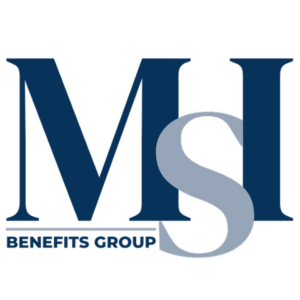The pharmacy landscape is evolving at a rapid pace, driven by advancements in medicine, regulatory changes and shifts in consumer behavior. For employers and health plan managers, keeping pace with these changes is essential to manage costs effectively while ensuring high-quality care for members. In 2025, several key pharmacy trends are poised to shape the healthcare market and significantly impact health plan spend.
Specialty Drugs Dominate Spending
Specialty drugs, used to treat complex, chronic conditions such as cancer, rheumatoid arthritis and multiple sclerosis, continue to be a primary cost driver in pharmacy benefits. Although they make up a small percentage of prescriptions, specialty drugs can account for 50% or more of total pharmacy spend for many health plans.
In 2025, the introduction of innovative therapies, including gene and cell therapies, is expected to accelerate this trend. For example, CAR-T cell treatments for certain cancers and gene therapies for rare genetic disorders are transforming care but often come with six-figure price tags. Health plans will need to evaluate these therapies critically, managing pharmacy benefits and value-based contracting to manage costs while ensuring access.
Rise of Biosimilars
Biosimilars – biologic drugs that are nearly identical to already approved reference products – offer a promising avenue for cost savings. As patents for several blockbuster biologics expire, the U.S. market will see an influx of biosimilar products in 2025. These alternatives are expected to lower prices for expensive treatments like insulin and monoclonal antibodies.
However, adoption rates may vary due to ongoing provider and patient education challenges. To maximize savings, employers and plan sponsors can evaluate alternative funding methodologies to gain more control over their Rx formulary and prioritize biosimilar utilization to encourage their use.
Increased Focus on Mental Health Medications
Mental health conditions have surged in prevalence with anxiety, depression, and other disorders taking a toll on productivity and well-being. Consequently, health plans are witnessing rising demand for antidepressants, antipsychotics and other mental health medications.
In 2025, this trend is expected to continue, driven by greater awareness and reduced stigma around mental health treatment. Employers can manage costs by integrating mental health resources into their health plans such as telemedicine services or Employee Assistance Programs to provide holistic support alongside pharmaceutical solutions.
Accelerated Adoption of Digital Therapeutics
Digital therapeutics (DTx) use software-based interventions to treat medical conditions and have emerged as a complement to traditional drug therapies. In areas such as diabetes management, chronic pain, and substance use disorders, DTx offers evidence-based treatments that can improve outcomes while reducing reliance on costly medications.
By 2025, more health plans are expected to include DTx in their benefit offerings. These therapies can create cost efficiencies by reducing hospitalizations, improving adherence to medication regimens, and empowering patients to manage their conditions more effectively.
Inflationary Pressures and Regulatory Reforms
Despite advancements in cost-saving measures, inflationary pressures are likely to push up the price of prescription drugs in 2025. Regulatory developments, such as drug price negotiations under the Inflation Reduction Act, aim to counterbalance this trend. However, their long-term impact remains uncertain.
Plan sponsors will need to stay informed about regulatory changes and actively engage with partners like MSI to implement strategies that include direct rebate sharing and formulary adjustments that can mitigate the effects of rising prices.
Emphasis on Transparency and Cost-Sharing Models
As healthcare consumers become more cost-conscious, transparency in drug pricing is increasingly important. Tools that provide real-time cost information to patients and providers at the point of prescribing are expected to gain traction in 2025. These tools help ensure patients are prescribed cost-effective therapies, reducing out-of-pocket expenses and improving medication adherence.
Additionally, health plans are experimenting with alternative cost-sharing models, such as value-based insurance design to align patient incentives with effective care delivery.
Strategies for Employers to Manage Pharmacy Costs
To navigate these trends effectively, employers and health plan sponsors can adopt several strategies. These include implementing innovative cost-management techniques, promoting wellness programs and preventive measures to reduce the need for expensive interventions, utilizing advanced analytics to identify high-cost drivers and opportunities for intervention, and focusing on employee education to provide tools and resources that empower employees to make informed choices.
Bottom Line
Pharmacy costs are a dynamic and complex component of healthcare spend but staying informed about the latest trends can empower employers and health plan sponsors to make proactive decisions. From specialty drugs and biosimilars to mental health treatments and digital therapeutics, the key drivers of pharmacy costs in 2025 reflect both challenges and opportunities. By adopting targeted strategies and collaborating with the right partners, employers can balance cost containment with high-quality care, ensuring sustainable health benefits for their workforce.
MSI Benefits Group has seen great success in implementing pharmacy cost mitigation techniques and programs to drastically reduce Rx spend for both employer groups and employees. Contact MSI today to learn more about our unique solutions for reducing pharmacy costs and supporting your workforce with comprehensive, cost-effective healthcare benefits.

